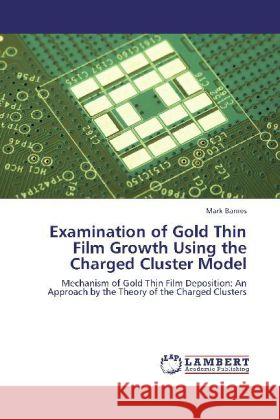Examination of Gold Thin Film Growth Using the Charged Cluster Model » książka
Examination of Gold Thin Film Growth Using the Charged Cluster Model
ISBN-13: 9783848431793 / Angielski / Miękka / 132 str.
Thin film science plays a crucial role in high-technology industries with many applications in electronics, energy generation and conservation strategies. Crystallization from the vapor phase is an important method for the preparation of semiconductors, insulators and metals. Therefore, it is crucial that the mechanism of thin film growth be understood. Unfortunately, this is not the case and developments in thin films have been made mostly by trial and error, and explained using an outdated mechanism. Generally, the mechanism of thin film deposition by CVD/PVD is considered a surface reaction with atoms and/or reactive species produced in the gas phase of the reaction chamber. Gas phase nucleation is generally considered a detriment to thin film quality, and engineers tend to assume that this process does not occur to a significant extent under ordinary thin film deposition conditions. An alternative mechanism, the charged cluster model, suggests instead that a thin film is a three dimensional assembly of charged nanoparticles that nucleated in the gas phase. This book shows that the charged cluster model applies to metal thin film deposition by thermal evaporation.











